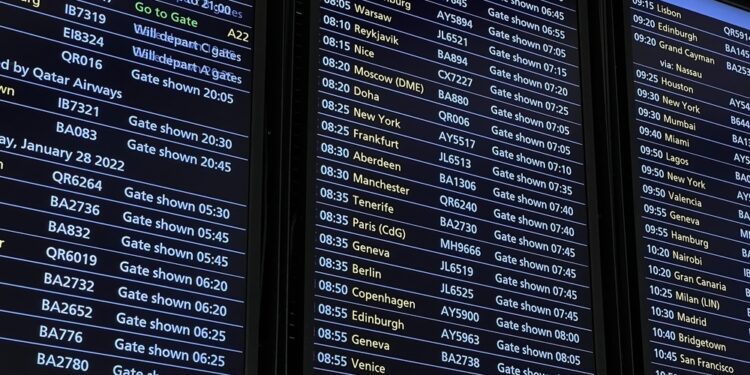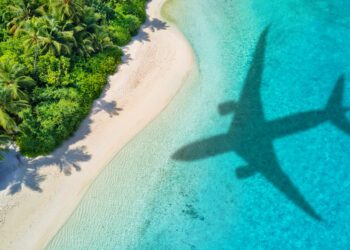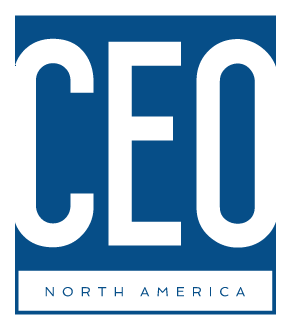You can tell a lot about a flight by the numbers used its call sign.
Every airline’s scheduling department has a precise methodology for assigning numbers to its flights. Let’s take a look at some general principles behind them.
Pilots use their airline’s denominator before reporting the numbers associated with their flight. This differs from general aviation where pilots report to ATC using the tail number of their aircraft. Some call signs are simply the name of the operator, such as “American” or “Qantas.” Other airlines use identifiers that are more unique, such as “Speedbird” for British Airways or “Giant” for Atlas Air.
You can tell a fair bit about your flight by its call sign. Specifically, the numbers used for the flight give away a fair bit about the operation of a flight. Delta Air Lines, United Airlines, and American Airlines all operate their mainline revenue service using flight numbers that are between 1 and 2999. If you are scheduled to fly on a flight with a higher numeric value, such as “Delta 4516,” you will be flying on a regional affiliate of the mainline (in this example, SkyWest Airlines).
Likewise, “American 3700” is operated by Envoy Air, and “United 6167” is operated by Mesa Airlines. These are just some general examples. The takeaway is that if an airline operation includes subsidiaries that fly under that airline’s brand name, their flight numbers will be ordered to reflect this.
When airlines share flights
“Codesharing” is another interesting wrinkle in flight number ordering. I’ve heard many stories from passengers who book a flight through an airline’s website and are surprised when they arrive at their departure gate and find their plane and crew are from a different airline altogether. This is an example of a codeshare agreement, and this most often happens when passengers book international trips with airlines that are part of one of the three major alliances: oneworld, SkyTeam, and Star Alliance.
Here’s an example: A passenger books a trip from San Francisco to Berlin through United Airlines. They fly on a United 777 to Frankfurt on “United 58,” but are surprised when their onward connection to Berlin is operated by Lufthansa despite the flight number being “United 8715.” United Airlines and Lufthansa are both partners in Star Alliance and are able to market each other’s flights as their own in order to expand their global network. Generally, if a flight number is four digits and starts with a 7 or 8, it is a codeshare on a partner airline.
Other higher numbers
Two more reasons why you might see a mainline airline operating a flight number that is numerically high (starting with an 8 or 9 and is four digits) is because it is a charter or a freight-only flight. During the pandemic-induced slowdown in international travel, it was common to see mainline airlines operating routes with these call signs to destinations that they normally do not serve.
This was because they were special cargo flights not listed for public revenue travel. Likewise, airlines operate charter flights to transport sports teams or military personnel. These flights often operate with higher than normal flight numbers, as do ferry flights used to reposition aircraft without any passengers on board.
There are many more quirks and intricacies involved in a flight’s number. It’s a fun topic that I started getting into long before I became a pilot. If you haven’t already, open up a flight tracking website and see if you can pick up on any particularities in the call signs of the airlines you fly most.
Courtesy simpleflying.com By Jack Herstam. Article available here.












